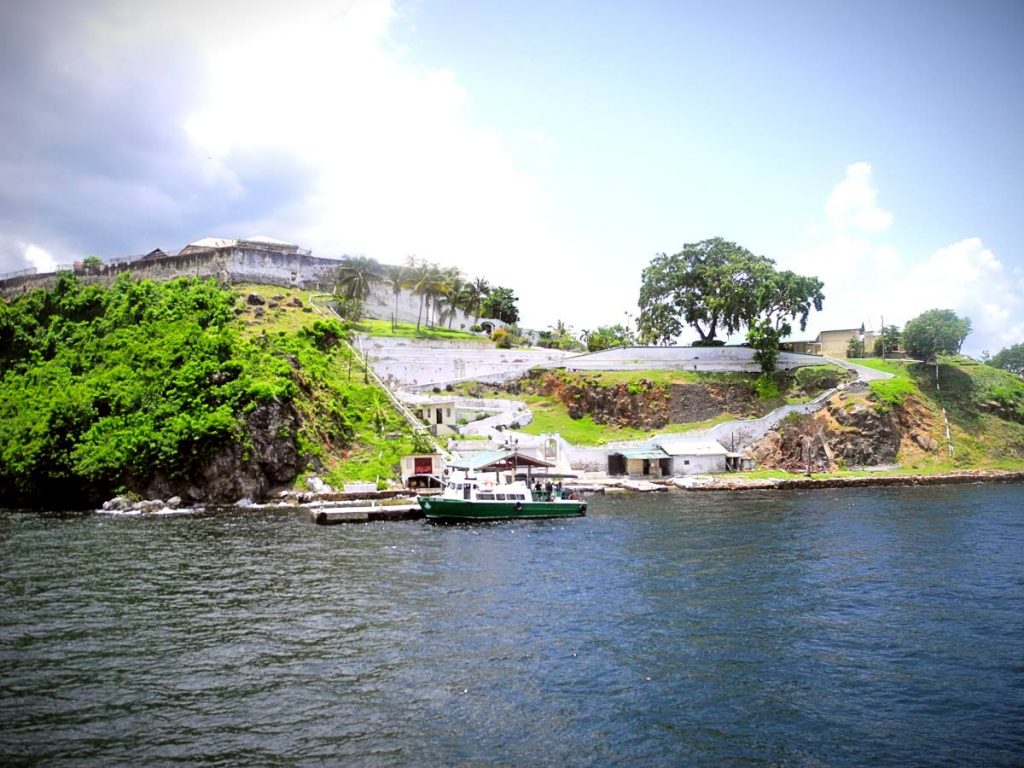Isolation on Prison Island

LESLIE-ANN PAUL
AS TT deals with covid19, people have had to familiarise themselves with terms such as "social distancing,” “self-isolation” and “quarantine.”
But these precautions are not new to the country. History provides some not-too-distant examples of these and other measures adopted to deal with issues of public health and safety.
Minister of National Security Stuart Young reminded the country that a former mayor of Port of Spain, DW Sutherland, barred all public gatherings in 1918 to manage the Spanish Influenza, which took the lives of many people in TT.
There have been many other times in the country’s history when such extreme measures were deemed necessary.
In a three-part series, the National Trust explores other times when quarantine or isolation were imposed, with special focus on the Western Isles in the Gulf of Paria.
The first part was carried on April 25.
CARRERA is notorious for its use as a prison island, which has made it perhaps the best known of the Western Isles.
The island was used to imprison those deemed (by many of whom were themselves violators of human rights) to be the most vicious criminals in society.
After the emancipation of the enslaved in 1834, the authorities, with lessened powers of control, complained that there was a notable increase in criminal activity. Perhaps to insulate the public (of European descent) from its fear it was decided that separation by water was the best way to penalise criminals. Here they were able to freely put into practice the concept of hard labour which was inscribed in English law via the Criminal Law Act of 1776.
In the 1870s a permanent prison was established on the island, where those convicted of crime were mercilessly punished for infractions of behaviour, made to live on meals of little nutritional value, and made to do hard labour, including quarrying stones to be used as road metal. This kind of harsh treatment was thought to act as a deterrent to crime.
Before its use as a prison depot, Carrera served as an auxiliary ulcer hospital to the Colonial Hospital, which had faced vast overcrowding. Because of its distance from the populous city of Port of Spain and because of its open, airy nature, it was believed Carrera Island could be used therapeutically for ulcer patients. This point of view was based on the Victorian belief that most physical diseases were of miasmatic origin. To prove that such isolation was beneficial for ulcer patients, a legislative council member in 1866 said that “patients who had been under treatment at the Island, have already derived a boost from the pure air and sea bathing.”
That same year, Carrera was considered for use as an immigration convalescent depot for arriving Indian immigrants. However, it was rejected in favour of Nelson Island.
Although the government announced plans to shut down the facility in 2013, Carrera remains a prison island today.
On the National Trust’s Western Isles Tours you can learn more about Carrerra as well as the other islands off Trinidad’s northwest peninsula.
Visit its Heritage Asset Register or become a member via its website at nationaltrust.tt to discover TT’s heritage and look out for part 3 of this series on the Western Isles as quarantine islands.
Leslie-Ann Paul is the heritage preservation and research officer, National Trust of TT.
This piece is based on the research and writings of Anthony de Verteuil CSSp and Ashleigh J Morris of the National Trust.


Comments
"Isolation on Prison Island"